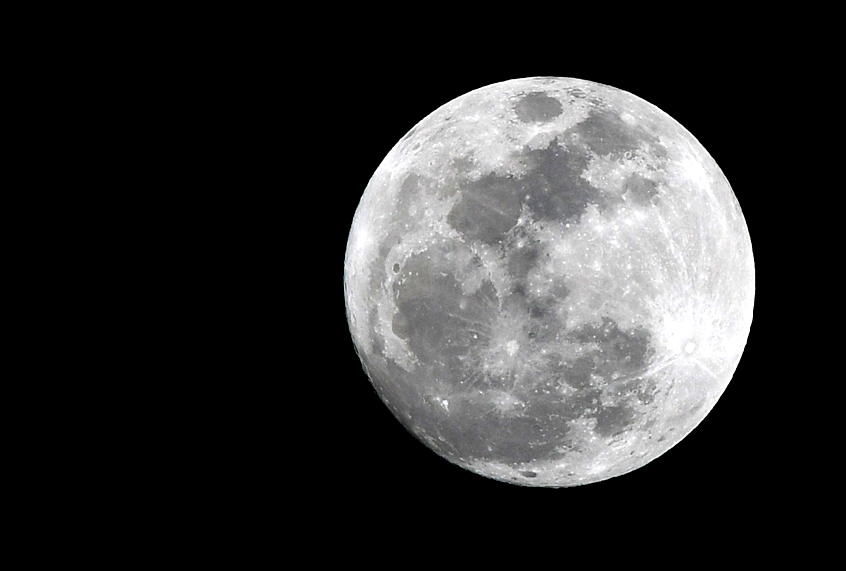The first day of the New Year brought something very special. The full moon, dubbed the “wolf moon,” or as NASA calls it, #NewYearsDay Moon, will hold the title for the biggest and brightest moon of 2018, even just two days in.
Tonight’s full Moon will be the biggest and brightest of 2018. Called the Wolf Moon, we’re calling it our #NewYearsDay Moon and the most super of the three supermoons this winter. Happy #MoonCrushMonday! https://t.co/s6Egk9vvTj pic.twitter.com/PAJfyzeKYz
— NASA Moon (@NASAMoon) January 1, 2018
NASA explained that a moon is a “supermoon” when “the full Moon will be at or near its closest point in its orbit around Earth.” The moon’s orbit varies, but when we’re lucky, “a full moon and the point closest to the Earth line up,” NASA said.
Because the Moon’s orbit is elliptical, sometimes it's closer to Earth and sometimes it is farther. When a full Moon and the point closest to the Earth line up, we get a supermoon. pic.twitter.com/ZgmzWiOioR
— NASA Moon (@NASAMoon) January 1, 2018
A supermoon is coming! On Jan. 1, the full Moon will be at or near its closest point in its orbit around Earth, making it a supermoon. Bundle up, get outside and look up! https://t.co/KTetZO7wZA Follow @NASAMoon for more lunar facts! pic.twitter.com/Ob14LAceFn
— NASA (@NASA) December 31, 2017
All of NASA’s excitement the day before was more than justified once images of the supermoon surfaced on Twitter and elsewhere.
The first full moon of the year is called wolf moon🐺 but in other cultures can be an old moon, snow moon or ice moon. The perigee action started @NASAMoon
— Pradeep Thirumalai (@thalapathipradi) January 1, 2018
The images, captured from all over the world, were as stunning as promised. https://twitter.com/CNN/status/947937251069186049
🇦🇪 A “supermoon” rising over a mosque in the Dubai Marina. Supermoons happen when a full moon approximately coincides with the moon’s perigee, or a point in its orbit at which it is closest to Earth. 📷 @cacaciotti #AFP pic.twitter.com/ZGoN8nSLJG — Frédérique Geffard (@fgeffardAFP) January 1, 2018
A great way to start the New Year with a beautiful view of #London and the #supermoon ✨Happy 2018 everyone⭐️ pic.twitter.com/AGnCG6LliW
— Katarina Cas (@katarinacas) January 1, 2018
Wolf moon tonight shot on Nikon P900 #MoonCrushMonday pic.twitter.com/NsUpCzkKPU
— voice of correctness (@ThomasB76774102) January 1, 2018
Supermoon tonight over south Devon #WolfMoon pic.twitter.com/g0l5RJpMUc
— Richard White (@aesir69) January 1, 2018
@VirtualAstro New year super moon over Forth Rail Bridge pic.twitter.com/9G8sQ0swjy
— Steve (@echline02) January 1, 2018
The first supermoon of 2018 is seen from the countryside in Montemayor, Spain, on the first day of the year. pic.twitter.com/BhJ3hjXwyH
— Fox News (@FoxNews) January 1, 2018
Hopefully you caught this supermoon, because there won’t be another of this magnitude in 2018.


